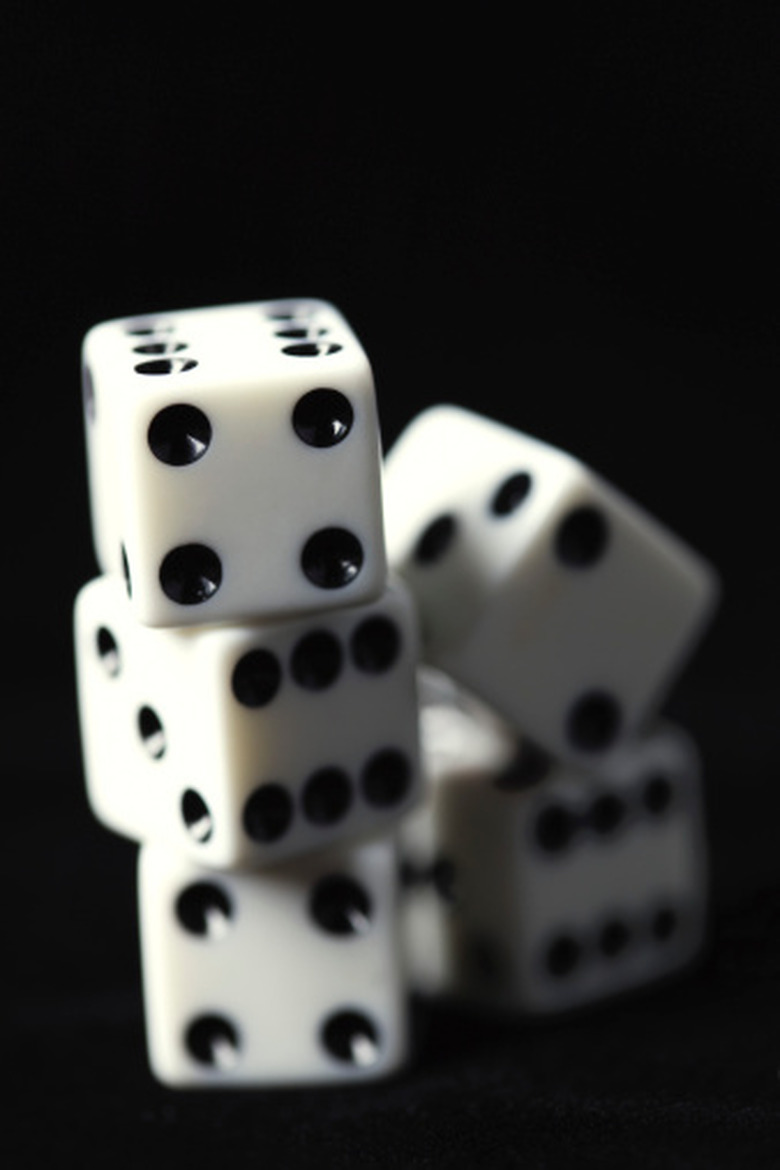How To Solve Probability Questions
Most probability questions are word problems, which require you to set up the problem and break down the information given to solve. The process to solve the problem is rarely straightforward and takes practice to perfect. Probabilities are used in mathematics and statistics and are found in everyday life, from weather forecasts to sporting events. With a little practice and a few tips, the process of calculating probabilities can be more manageable.
Step 1
Find the keyword. One important tip when solving a probability word problem is to find the keyword, which helps to identify which rule of probability to use. The keywords are "and," "or" and "not." For instance, consider the following word problem: "What is the probability that Jane will choose both the chocolate and the vanilla ice cream cones given that she chooses chocolate 60 percent of the time, vanilla 70 percent of the time, and neither 10 percent of the time." This problem has the keyword "and."
Step 2
Find the correct rule of probability. For problems with the keyword "and," the rule of probability to use is a multiplication rule. For problems with the keyword "or," the rule of probability to use is an addition rule. For problems with the keyword "not," the rule of probability to use is the complement rule.
Step 3
Determine what event is being sought. There may be more than one event. An event is the occurrence in the problem that you are solving the probability for. The example problem is asking for the event that Jane will choose both the chocolate and the vanilla. So in essence, you want the probability of her choosing these two flavors.
Step 4
Determine whether the events are mutually exclusive or independent if appropriate. When using a rule of multiplication, there are two to choose from. You use the rule P(A and B) = P(A) x P(B) when the events A and B are independent. You use the rule P(A and B) = P(A) x P(B|A) when the events are dependent. P(B|A) is a conditional probability, indicating the probability that event A occurs given that event B has already occurred. Similarly, for the rules of addition, there are two to choose from. You use the rule P(A or B) = P(A) + P(B) if the events are mutually exclusive. You use the rule P(A or B) = P(A) + P(B) – P(A and B) when the events are not mutually exclusive. For the complement rule, you always use the rule P(A) = 1 – P(~A). P(~A) is the probability that event A does not occur.
Step 5
Find the separate parts of the equation. Each equation of probability has different parts that need to be filled to solve the problem. For the example, you determined the keyword is "and," and the rule to use is a rule of multiplication. Because the events are not dependent, you will use the rule P(A and B) = P(A) x P(B). This step sets P(A) = probability of event A occurring and P(B) = probability of event B occurring. The problem says that P(A = chocolate) = 60% and P(B = vanilla) = 70%.
Step 6
Substitute the values into the equation. You can substitute the word "chocolate" when you see the event A and the word "vanilla" when you see the event B. Using the appropriate equation for the example and substituting the values, the equation is now P(chocolate and vanilla) = 60% x 70%.
Step 7
Solve the equation. Using the previous example, P(chocolate and vanilla) = 60 percent x 70 percent. Breaking down the percentages into decimals will yield 0.60 x 0.70, found by dividing both percentages by 100. This multiplication results in the value 0.42. Converting the answer back to a percentage by multiplying by 100 will yield 42 percent.
Warning
Two events are known to be mutually exclusive if they both cannot occur at the same time. If they can occur at the same time, they are not. Two events are known to be independent if one event does not depend on the outcome of the other event. These definitions are used to help complete the previous steps; a working knowledge of these is required to solve these problems.
Cite This Article
MLA
Friesen, Michelle. "How To Solve Probability Questions" sciencing.com, https://www.sciencing.com/solve-probability-questions-8533798/. 24 April 2017.
APA
Friesen, Michelle. (2017, April 24). How To Solve Probability Questions. sciencing.com. Retrieved from https://www.sciencing.com/solve-probability-questions-8533798/
Chicago
Friesen, Michelle. How To Solve Probability Questions last modified March 24, 2022. https://www.sciencing.com/solve-probability-questions-8533798/
